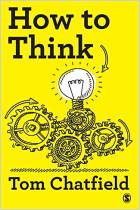Melden Sie sich bei getAbstract an, um die Zusammenfassung zu erhalten.

Melden Sie sich bei getAbstract an, um die Zusammenfassung zu erhalten.
Edward de Bono
Six Thinking Hats
Little, Brown US, 1985
Was ist drin?
How to deal with one concept at a time, even when you are thinking with a group.
Recommendation
People of all ages and from every walk of life have used Edward de Bono’s “Thinking Hats method.” It provides a convenient, easy way to cut through confusion and process information clearly. De Bono’s “Six Hats” are visualization tools that help sidestep the ego, providing a path to nonjudgmental decision making. Each chapter in his book includes a detailed description of a different hat color and its applications. De Bono offers plenty of example dialogues to suggest how to use the hats in conversation. getAbstract recommends his approach to managers, teachers, group leaders or anyone involved in group decision making.
Summary
About the Author
Edward de Bono holds degrees in medicine and psychology. He was a Rhodes scholar at Oxford and has taught at Oxford, Cambridge, London and Harvard universities. He has written more than forty books, including Lateral Thinking, De Bono’s Thinking Course and Teach Your Child How to Think.




















Comment on this summary